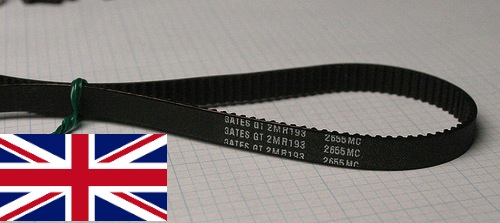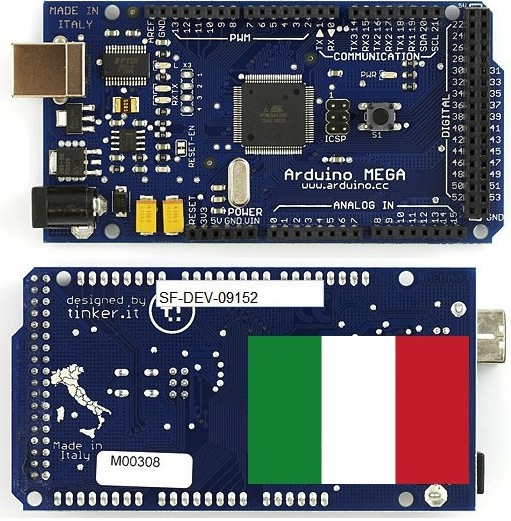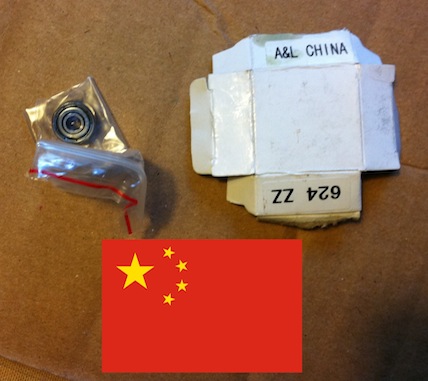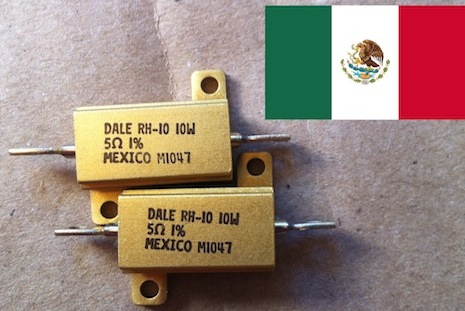Future Now
The IFTF Blog
MakerBot Day 4: It Takes a World to Make a MakerBot
You may have noticed that, four posts into this series exploring life with a MakerBot, I've yet to actually print anything with my Thing-O-Matic. To make a long story short, despite my best efforts to resolve the problem on my own - which primarily consisted of testing the connections between the Arduino MEGA and the TOM's motherboard (the combined brain of the bot, these are responsible for processing the 3D model input and issuing commands to the other electronics in the bot), it turned out that the problem was beyond my capacity to fix. Which is not to say that someone more proficient with a digital multimeter - a device used to measure voltage, current and resistance - couldn't have figured things out. Rather, I simply reached the limits of my technical capacity for identifying and fixing what was wrong with my printer's electronic brain.
So, while I wait for my replacement board to make its way from NYC to Palo Alto ...
I have long been fascinated with getting a sense of what things I can do in life from first principles, entirely on my own. I don't mean this in a survivalist sense - although there was the time when I downloaded, printed, and bound the SAS' survival handbook just in case armageddon struck and I was left to fend for myself. Left to my own devices, I was sure that this manual would empower me to become if not a supreme overlord, then at least let me set up a pretty sweet fiefdom. Who else would know how to distill water using only a tarp, or how to skin a squirrel? Unfortunately my wife in her shortsighted wisdom decided that the book was "taking up too much space" on our bookshelf (untrue), and so when disaster hits I will be left scrounging for discarded squirrel meat with the rest of you suckers.
But I digress. When I think about self sufficiency, I am usually thinking more about the technologies I interact with on a day to day basis, and how many of their constitutive parts I could create were I left to my own devices. The answer, unsurprisingly, is not a whole lot. When I look at my computer, for example, I realize how far removed my interactions with this technology is from its ultimate production. Unlike a hammer, which I think I could perhaps fashion out of some twine and a large rock, from the screen to the circuitry to the electricity that brings it to life, for the most part the personal utility of my computer is entirely down to the hard work and ingenuity of others.
Which brings us to the Thing-O-Matic. The promise of 3D printing technology is that it empowers the individual to create things that have until now required resources and capital that were only feasible for corporations or the eccentric rich. In essence, it allows me to create some pretty fantastic hammers. To some degree this is true, but my experience with the circuit board got me thinking reductively about how close the TOM brings me to my survivalist ideal.
And, of course, the truth is that while the TOM does unlock a wide array of capacities for the individual user, these capacities are enmeshed within a network of enabling people, communities, and technologies. So, yes, I have painstakingly assembled a machine that (still theoretically) allows me to churn out physical goods that are more representative of my actual needs in life. And, what I wish to do in theory, others have done in practice -- to me the classic case is Thingiverse user laszlo. Laszlo's blender broke, and instead of having to track down replacement parts or risk having to throw it away and then buy a new one, Laszlo created a model of the broken part and printed out the replacement (for a more complete account of this awesome story, check out his blog).
That said, the network of goods and knowledge that Laszlo had to harness in order to get to the point where he could fix his own blender is, to me, nothing short of astonishing. Going through the parts list for the Thing-O-Matic, as well as the things I had to buy in order to put together the MakerBot (solder, wire strippers, etc.), I counted six different visibly marked country of origin stamps.
And this was only what I could readily identify. I have no doubt that if I looked for the providence of the other 50-odd parts of the TOM, this list of origin countries would grow. Furthermore, the community of people who participate in the forum discussions and help threads on the MakerBot wiki, and who provide modifiable models on Thingiverse, represent a truly global source of intellectual capital.
Which is to say ... wait for it ... it takes a world to make a MakerBot. This may sound pretty naive, but I think it is absolutely fascinating that the advent of personal fabrication - technology that has the potential to change our relationship to personal goods - is only possible thanks to the mobilization of a number of extraordinarily complicated global manufacturing, supply and support chains.
A MakerBot tour around the world.

The Thing-O-Mati timing belts move the build platform, and are from the United Kingdom.

The Arduino is an open-source electronics prototyping platform based on flexible, easy-to-use hardware and software, was designed in Italy, but likely assembled elsewhere.

Like many of the parts, the self-aligning bearings are built in China.

The power resistors, from Mexico, are responsible for heating the nozzle that distributes the melted plastic.



